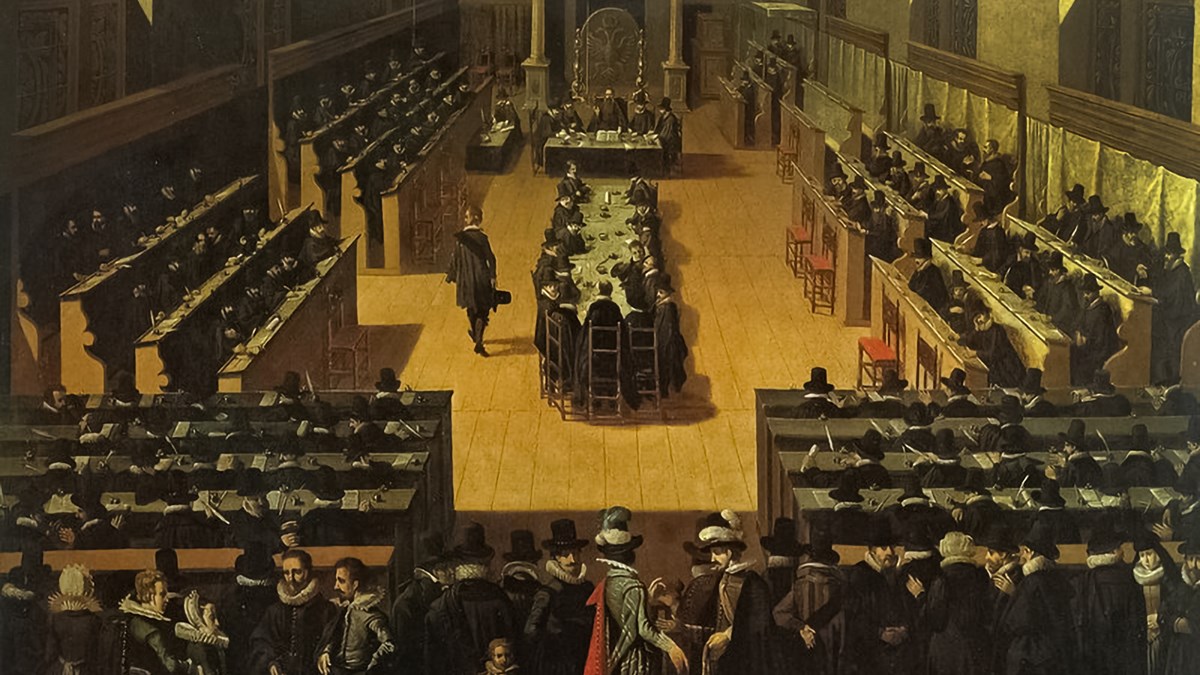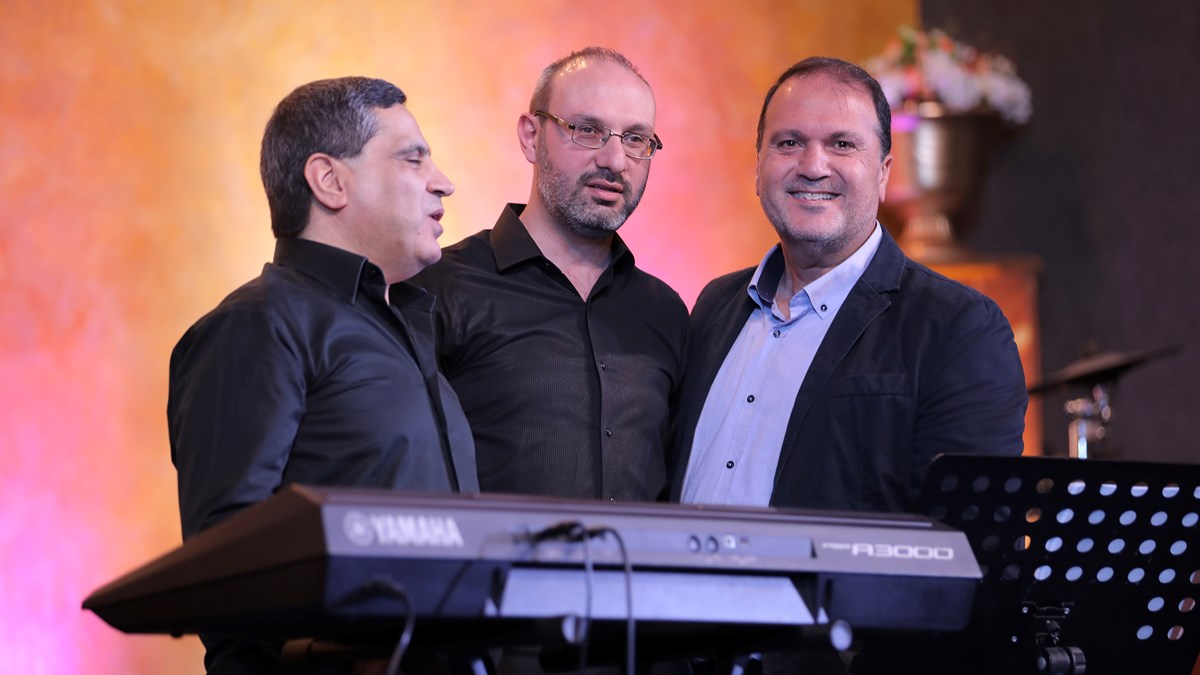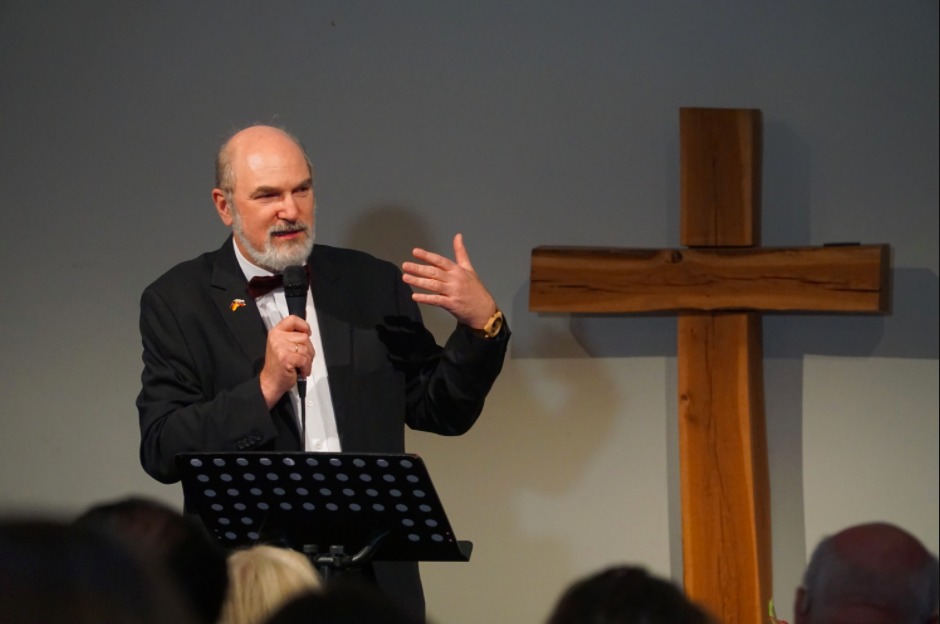The year was 1618, just over a century after Martin Luther nailed his famous theses on the door of the Wittenberg church, and the established Dutch churches feared his teachings in their country were about to be overturned. The Netherlands (which initially included what is today Belgium, Luxemburg, and portions of northern France) had been one of the first areas to receive the message of the Reformation, and the first to produce Protestant martyrs. Over time, the number of Dutch martyrs exceeded those of any other European nation.
The worst persecution took place under Phillip II of Spain, who ruled over the Netherlands from 1555 to his death. Popular protests included raids upon Roman Catholic churches and destruction of images. Philip’s armed intervention started a full-scale war, with William the Silent, Prince of Orange, leading the northern provinces into independence from Spain. These provinces, known as the Dutch Republic, adopted Protestant worship, while the southern ones remained under Spanish (Roman Catholic) rule.
The Father of Arminianism
Jacob Arminius (1559–1609) was one of the many orphans of this Eighty Years’ War, as his father died fighting against Spain. Raised by cousins of his mother, Arminius received a large grant from the Protestant merchants’ guild in Amsterdam, which allowed him to study theology in various European cities. He returned to Amsterdam in 1587 with a recommendation by Theodore Beza, John Calvin’s successor, and was ordained and installed as pastor.
Arminius’s sermons didn’t raise many questions until 1591, when Petrus Plancius, a well-known pastor, professor, and cartographer, noticed some unconventional interpretations of the book of Romans, particularly chapters 7 and 9. In dealing with subjects such as Paul’s sinful tendencies after regeneration and God’s election of his people, Arminius had departed from the traditional Augustinian teachings the Reformed Church had adopted. When confronted, however, Arminius denied any divergence from either Augustine or the Belgic Confession—the 1561 summary of Reformation teachings that he, as a pastor, had solemnly promised to uphold.
Arminius continued a relatively quiet ministry until 1603, when he was considered for a professorship at the Dutch University of Leiden. Those who had been suspicious of his views wondered if he was the best candidate. He was cleared when Francis Gomarus, the eldest professor at Leiden, interviewed him thoroughly and, based on Arminius’s answers, concluded his teachings were orthodox.
But this clearance was not sufficient to put to rest the prevailing doubts of many pastors, including Gomarus, who sensed that Arminius’s private teachings didn’t match his public statements but found the matter difficult to investigate. Arminius refused invitations to conferences where his views could be examined and limited his correspondence to a denial of wrongdoing and explanations of his reticence to speak.
In 1608 Arminius wrote a more complete statement of beliefs, the Declaration of Sentiments, in response to a document that attributed to him portions of 31 controversial articles. This Declaration revealed some of his differences with the established church, but Arminus died the following year, before his statements could be fully examined.
The Rise of the Remonstrants
Instead of putting an end to the controversy, Arminius’s death brought his true teachings into the open, mostly through the publication of writings he had until then kept private. Some of his students became also vocal, taking his thoughts further than he had done.
In 1610, 42 of these men produced a document questioning some of the teachings of the Belgic Confession on matters of salvation, and presented it to the Dutch government, asking for their views to be considered and protected. (At this time, monarchs determined the religion of their countries and had the power to convene or authorize synods.)
These statements of objection were normally called remonstrances. This particular document became so crucial that it is now remembered simply as the Remonstrance, and its supporters as the Remonstrants.
The Remonstrance included five points, which can be summarized as follows:
- God predestines to eternal life those who “shall believe on this his Son Jesus, and shall persevere in this faith and obedience of faith.” The Remonstrants agreed that the New Testament speaks of predestination, but they interpreted it as pre-science, or as predestination of a condition (faith and obedience) rather than individuals.
- Jesus died “for all men and for every man, so that he has obtained for them all, by his death on the cross, redemption and the forgiveness of sins; yet that no one actually enjoys this forgiveness of sins except the believer.”
- Human beings are born in sin and incapable of doing anything good until they are born again of God’s Spirit.
- A person can choose to resist and reject God’s grace.
- Further examination is necessary to determine if a person can lose his or her salvation.
The Remonstrants believed the Scriptures allowed for their interpretation of salvation, which emphasized free will and gave human beings a greater participation in their salvation.
A Long-Overdue Synod
The majority of Dutch pastors (sometimes described as Contra-Remonstrants) didn’t find these points biblical. To them, much of the Remonstrance sounded similar to the teachings of Pelagius, a fourth-century monk who had been condemned as heretic for teaching that, in spite of Adam’s sin, human beings have in themselves, by nature and apart from God’s grace, the power to believe in God and obey him.
The Remonstrants hadn’t gone as far as Pelagius but, to the Reformed pastors, saying that salvation rests on a person’s decision to believe and that grace can be resisted and possibly abandoned sounded like a step in that dangerous direction. This controversy clearly called for a synod, but convening one was not easy. The approval had to come from the government, but its highest levels of leadership were in turmoil over political disagreements.
It was only in 1618, after his key political rival was put to death for treason, that Prince Maurice of Orange was able to call the long-overdue synod in the Dutch city of Dordtrech (shortened as Dort). The issue on the table: a determination of whether the Remonstrants’ teachings were in line with the confessional documents of the church. Since the Remonstrance was already affecting churches in other countries, invitations were sent to delegates in Britain, Germany, Switzerland, and France.
The synod lasted over six months, from November 1618 to May 1619. It opened with a long prayer for God’s guidance in finding biblical answers. The synod decided to invite a group of Remonstrants in order to hear from them firsthand. While they waited for their arrival, the delegates discussed other matters (such as the teaching of the catechism and a translation of the Bible in Dutch).
Resenting the fact that they had been merely summoned to defend their position and had not been invited as delegates, the attending Remonstrants refused to consider the synod a proper judge of the validity of their teachings. Their spokesman, Simon Episcopius, gave a prolonged speech, leaving the delegates with the feeling that he was trying to avoid direct answers and to divert the discussion to secondary issues. Eventually, the chairman, Johannes Bogerman, expelled the Remonstrants with a brusqueness that surprised some of his fellow delegates.
The ensuing discussion was then based on the Remonstrants’ written documents and their five points. In the end, the Reformed presented their answers that can be summarized as follows:
- God’s choice of those who will be saved is not conditioned by what people may or may not do, since it is God who will, in time, “grant faith in Christ and perseverance.”
- On the cross, Jesus took upon himself the sins of those God has chosen to save, making full and permanent satisfaction for them.
- The Reformed found the Remonstrants in agreement about the human inability, apart from God’s grace, to choose to believe in Christ and obey him. Since the Remonstrants’ fourth point didn’t seem consistent with this statement, however, the synod answered points three and four together.
- If God decides to save someone by his grace, that person will not be able to say no.
- When God chooses to save a person, that person will persevere in faith until the end. Unlike the Remonstrants, the Reformed believed there is enough in Scriptures to support this interpretation. In fact, the synod provided plenty of Scriptural references to this as well as the rest of its statements.
The Canons and the Tulip
The conclusions of the synod were reported in a document known as “Canons of Dort,” which was then added to the existing confessional documents of the Dutch church. Together, the Canons, the Heidelberg Catechism, and the Belgic Confession make up the so-called Three Forms of Unity, which are still held by Reformed churches all over the world.
The Canons were written in simple Latin, void of academic jargon, as a pastoral text for laypeople. (If our English versions seem a little challenging, that’s because they are literal translations.) The synod believed they were composed “to the glory of God” and “for the integrity of the truth of salvation, the tranquility of consciences, and the peace and well-being of the Dutch church,” according to W. Robert Godfrey’s translation of a preface to the canons. In reality, they ended up bringing comfort and peace to all Reformed churches, both in 17th-century Europe and throughout the world in later times.
Today, the five points listed in the Canons are often described as “Five Points of Calvinism.” The definition is incorrect in many ways. First, these were specific answers to the five points of the Remonstrants. Second, they only represent a small portion of what the French Reformer John Calvin taught. Third, they were not invented by Calvin or his followers. Most of them were already defended by the fourth-century theologian Augustine of Hippo and have continued throughout the Middle Ages, only to be emphasized during the Protestant Reformation.
In the English-speaking world, the Remonstrants are commonly known as Arminians and the five points of the Contra-Remonstrants are remembered with the acronym TULIP, which stands for Total Depravity (point 3), Unconditional Election (point 1), Limited Atonement (point 2), Irresistible Grace (point 4), and Perseverance of the Saints (point 5). (The unknown author of this acronym changed the order, likely because ULTIP was not as catchy.) The acronym was a late invention, and some of these titles have been contested, particularly Limited Atonement, because the sacrifice of Christ was not in itself limited. Some prefer speaking of Definite Redemption, which is arguably more in line with the age-old description of Christ’s sacrifice as sufficient for all but efficient for some.
The Legacy of Dort
The Synod of Dort clarified and consolidated the positions of both Reformed and Arminians on these important matters. In fact, being the first formal, international Reformed synod, it brought theological unity among the European Reformed churches. For example, when the Westminster Assembly met from 1643 to 1653, it was able to build on the foundation Dort had already laid.
The controversy continued, most famously flaring up in the 18th century between John Wesley as promoter of Arminian teachings and George Whitefield as defender of the Reformed position.
The Synod of Dort is just as relevant today, on its 400th anniversary, because the same questions are still lingering (often aggravated by misconceptions and caricatures), and the different answers produce different worldviews and reactions. For example, Arminians and Reformed may have different responses to common situations such as the death of infants, a person’s crisis of faith, and unseemly rejections of God by Christians who become affected by serious mental illness or Alzheimer’s.
No matter what one’s convictions, reading the Canons of Dort can help Christians to take these matters seriously, especially in an age when we all tend to make the quickest decisions with the least possible effort. They offer a deeper understanding of our eternal salvation, our evangelistic duties, and especially the nature and purpose of our Triune God and how to live our lives for his glory.
Simonetta Carr is the author of the award-winning series Christian Biographies for Young Readers, published by Reformation Heritage Books. She also writes a regular column, “Cloud of Witnesses,” for the Alliance of Confessing Evangelicals.




























![[Video] More – Aghogho » GospelHotspot](https://gospelhotspot.net/wp-content/uploads/2024/04/More-Aghogho.jpeg)















